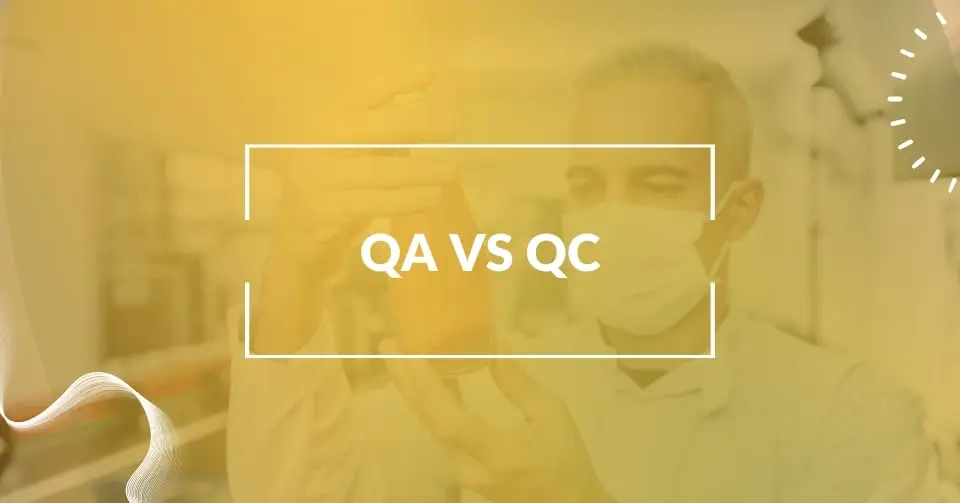Producing safe, high-quality food isn’t just important. It’s essential. One error can trigger a costly recall, damage your brand, or even lead to legal action. Strong systems are critical, no matter the size of your operation, from small startups to large-scale processors. Many professionals confuse quality assurance (QA) with quality control (QC). This confusion can create inefficiencies or safety gaps.
This article clarifies the difference between QA and QC and explains how modern software tools combine functions to improve performance and compliance.
The Core Philosophies: Proactive vs. Reactive Approaches
At the heart of quality management are two approaches:
- QA prevents defects. It embeds quality into the process from the start. QA system includes system design, standard operating procedures, and continuous improvement.
- QC finds and corrects defects. It focuses on final product inspections and testing.
These roles complement each other. QA builds strong processes. QC confirms the product meets standards. These complementary practices ensure that quality is both designed and verified.
Functional Roles in a Food Manufacturing Setting
In food manufacturing, QA and QC have distinct responsibilities that support an overarching quality management system.
QA Responsibilities:
- Designing and updating SOPs
- Ensuring regulatory compliance (FSMA, GFSI, ISO 22000)
- Supplier qualification and management
- Employee training and competency tracking
- Internal audits and CAPA (Corrective and Preventive Action)
QC Responsibilities:
- Pre-shipment and in-process inspections
- Microbial, allergen, and chemical testing
- Non-conformance documentation and response
- Equipment calibration
- Product sampling and verification
Together, these roles support consistent product quality and regulatory compliance.
Key Differences Between QA and QC
| Attribute | Quality Assurance (QA) | Quality Control (QC) |
| Purpose | Process prevention | Product inspection |
| Responsibility | System and policy development | Inspection and testing execution |
| Approach | Preventive and systematic | Corrective and analytical |
| Metrics | Compliance rates, audit outcomes | Defect counts, rejection rates |
| Documentation | SOPs, training records, audit logs | Test results, COAs, deviation reports |
Common Misconceptions & Why They Matter
Myth 1: QA and QC are the same. Reality: QA is strategic and long-term; QC is operational and immediate.
Myth 2: Testing is enough; only QC is necessary. Reality: QC identifies defects after the fact. QA reduces their occurrence from the beginning.
Myth 3: QC holds more importance. Reality: QA reduces the strain on QC by proactively ensuring processes produce consistent results.
Integrating QA and QC in a Quality Management System (QMS)
QA and QC should work together within a unified QMS framework:
- Flowchart Integration: QA establishes SOPs, supplier approval, and training; QC handles testing and verification downstream.
- Shared Platforms: Use centralized systems to track metrics, deviations, and audit results.
- Quality Committees: Cross-functional groups that review data and implement process improvements.
Integration ensures accountability, improves traceability, and enhances audit readiness.
Process Improvement and Continuous Assurance
Improving processes and maintaining assurance require quality assurance (QA) and quality control (QC), each playing a unique but connected role. QA focuses on building efficient, compliant systems that cut down variation and lower risk during production. Conversely, QC checks that final products meet set standards by protecting the brand and earning customer trust.
Together, QA and QC contribute critical data to continuous improvement cycles, which support enhanced training programs, quicker root cause analyses, and stronger relationships with suppliers.
Quality Management Tools and Techniques
A successful QA/QC program employs the following tools:
- QA Tools: SOPs, checklists, audit protocols, supplier evaluations
As a micropropagation team lead, I kept temperature logs in every grow room. These logs didn’t just track data—they flagged problems early. When the temperature drifted out of range, we could act fast. That quick response helped us protect plant quality and prevent more significant issues.
- QC Tools: Lab testing, inspection criteria, defect tracking
- Software Solutions: Real-time dashboards, COA automation, training logs, digital CAPA tracking tools
- Analytical Tools: Pareto charts, scatter diagrams, trend analysis for proactive action
These tools allow manufacturers to assess process capability, predict failures, and take preventive measures.
Addressing Real-World Challenges
Managing quality often means walking a fine line between controlling costs and meeting compliance standards. Investing early in QA pays off. It cuts waste, reduces rework, and lightens the load for QC later. Documentation can pile up fast, but digital tools help keep reporting efficient and data accurate.
Misunderstandings between Quality Assurance (QA) and Quality Control (QC) can hinder progress. Cross-training personnel and using unified platforms can improve cooperation and efficiency.
Software’s Role in Harmonizing QA and QC
QA teams use software to make their jobs easier. Think things like keeping SOPs updated, handling training, and dealing with suppliers. This helps them work faster and ensure everything is done right. On the other hand, QC uses dashboards to watch tests, get alerts when things go wrong, and track lab data back to specific batches for better tracing.
Workflow Synergy: When a QC issue is flagged, the system notifies QA, triggers a root cause investigation, and initiates a CAPA—all tracked within one platform. To explore how digital tools can streamline your food safety efforts, check out our guide on Food Safety Plan Software for Food Manufacturers.
Conclusion
Differentiating QA and QC is critical to building a strong quality culture. Rather than treating them as standalone practices, food manufacturers should integrate QA and QC to foster continuous improvement and compliance. Together, they build strong food safety cultures. Software makes collaboration easier. With the right tools, food manufacturers can ensure safe, consistent, and audit-ready products.
FAQs
QA focuses on preventing problems by building systems like training programs, SOPs, and compliance checks. QC focuses on detecting issues by running tests, inspecting products, and tracking results.
Mixing them up can cause gaps in your process. Understanding their distinct roles helps prevent mistakes and keeps your operation running smoothly.
The right software makes it easier for both teams to share data, spot problems early, and stay aligned. When QA and QC work together, the entire business benefits.








